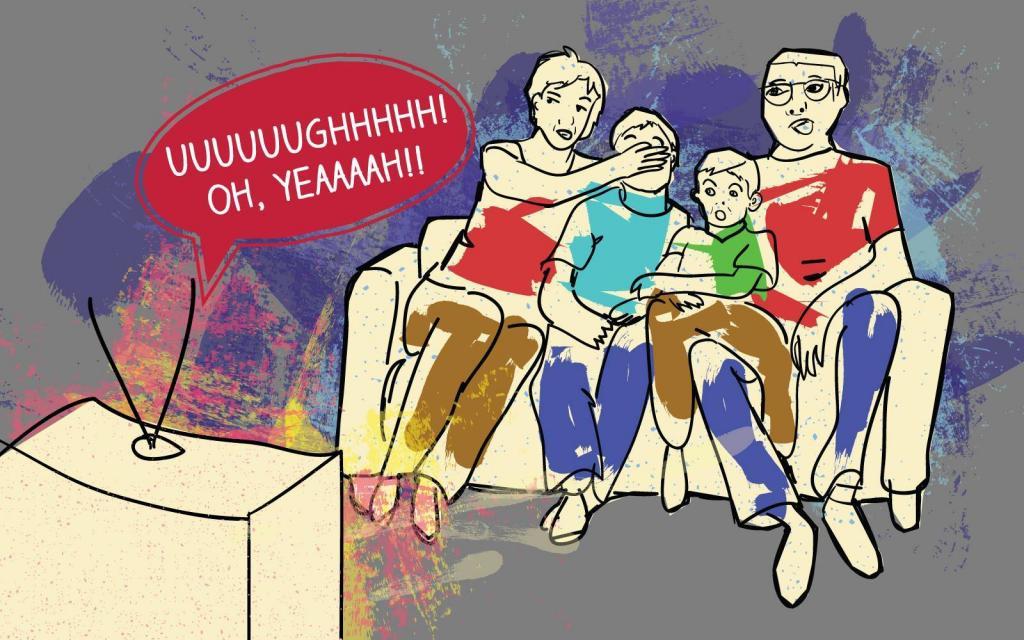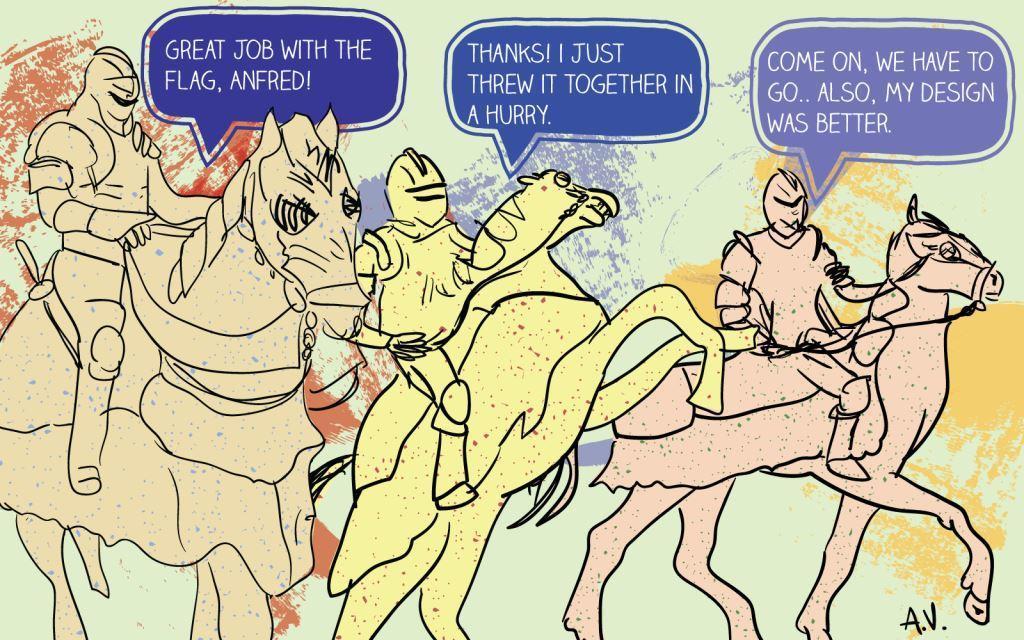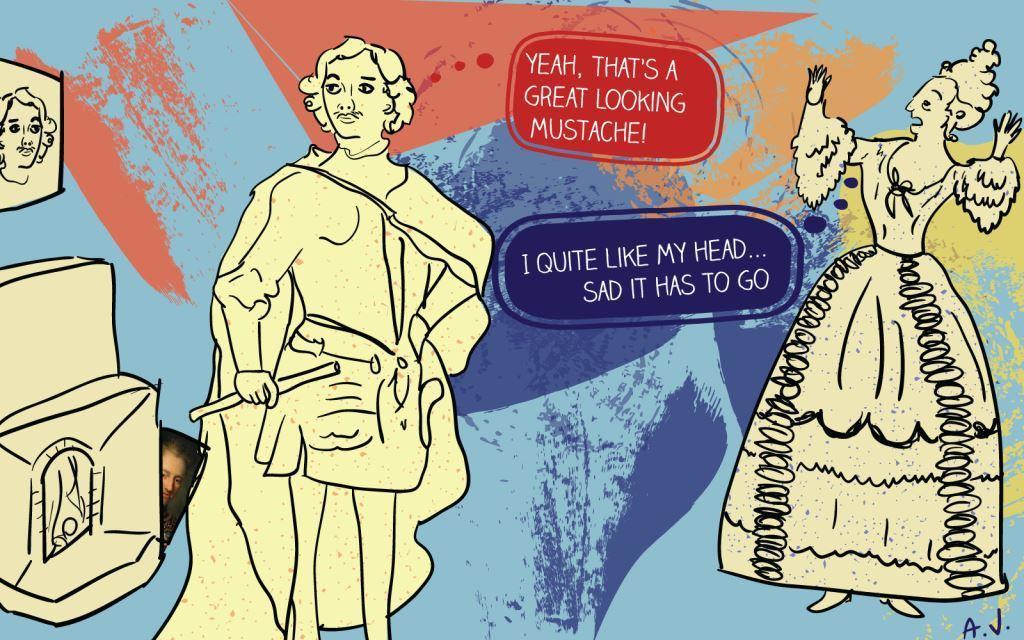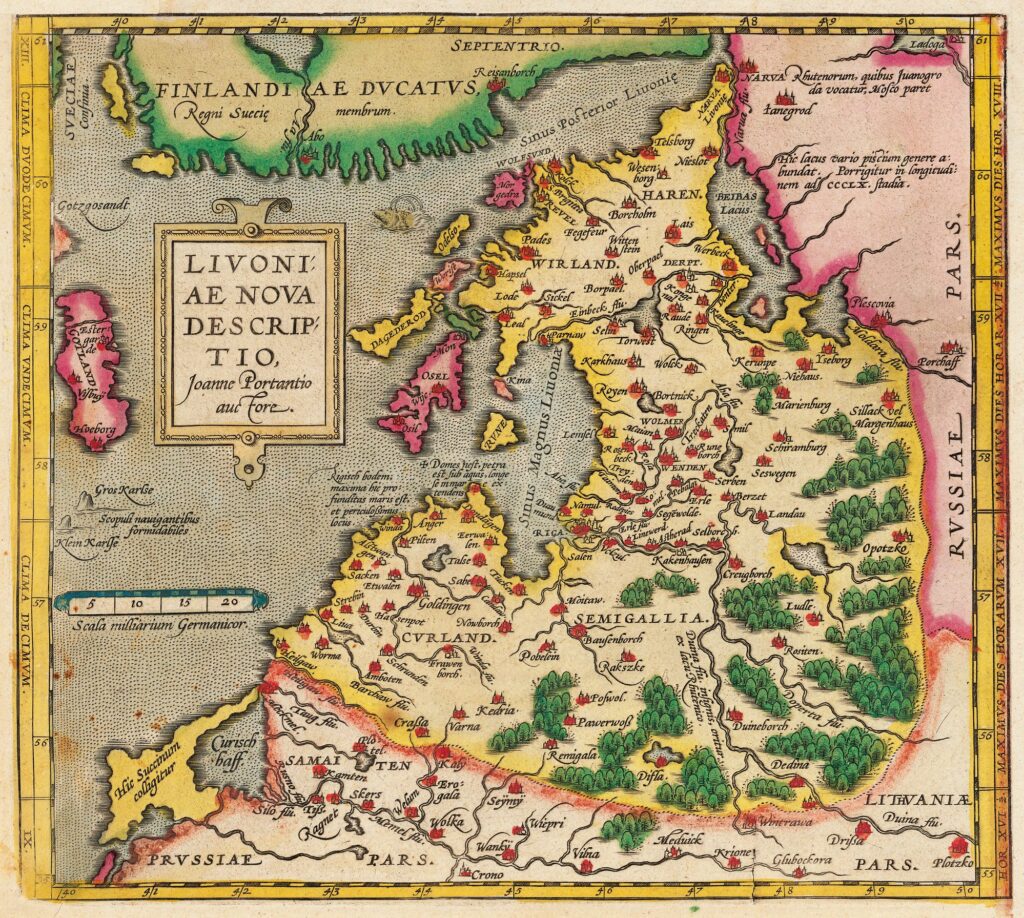Estonia is a country with a long history that is, in large parts, made out of the stuff that histories are usually made out of – treaties and wars, pacts and influence zones, and a lot of dates. Dozing off already? Not so fast, because in the middle of all the regular stuff there’s plenty of room left for all sorts of funny and weird happenings. What follows is a list of five wonderfully weird moments from Estonia’s past that will hopefully make you go: “Huh, that is pretty weird!”
Watching erotica with the family
It’s the evening of 24 June 1987, and the entire family has gathered around the TV to spend some quality time together. Granny’s dozing off in the armchair, mom and dad are shifting around restlessly and even uncle and his family have driven up from the south. In just a couple of minutes would start the first ever Estonian screening of “Emmanuelle”, the iconic French soft-core porn movie.
This was a big deal and only partially because there would be naked ladies on the television. Western TV was prohibited in the Soviet Union, which, of course, made it a very sought after commodity. In Estonia, people managed to sneak in a fair share of American TV-series “Dallas”, “Knight Rider” and the like thanks to Finland, where antennas were built unnecessarily high so that the Western TV-programmes could reach Estonia and have an influence on the Soviet citizens. David Hasselhoff really did have a small part to play in the collapse of the Soviet empire!
The signals from Finland wouldn’t reach inland, though, so you could only watch American shows in Tallinn and on the northern coast of Estonia. Not every show made people flock to the capital and usually those who could watch Western programmes would just write letters to their less fortunate friends and relatives informing them of the newest developments on “Dallas”. But “Emmanuelle” was a different beast entirely.
There would be naked people doing who knows what on television! Good jolly, if Lenin saw this he would be spinning in his mausoleum!

Already in the morning of that faithful day onlookers would have seen long lines of cars heading towards Tallinn from all corners of Estonia. Everybody wanted to see on the TV something that was such a taboo in the Soviet Union, yet apparently so casual in the West.
In the evening, Tallinn was normally packed with cars, but the streets were unusually quiet, almost nobody was walking around. But in almost every window one could see dimly flickering lights, as mothers and fathers, grandparents, cousins, uncles, children and really everybody gathered around the TV set to have a good look at what they were missing out on.
Nine months later the birth rate in Estonia spiked to an all-time high. In Estonia, at least, the legacy of “Emmanuelle” lives on to this day, quite literally.
A mummy in debt
So, it’s November and the year is 1700, and you’ve just lost a battle against an army three times smaller than the one you’re commanding, taken captive and transported to Tallinn, the current capital of Estonia. This is exactly the situation the general of the Russian army Carl Eugene de Croy, a Belgian-born nobleman found himself in after the battle of Narva on the current border of Estonia and Russia.
As it turns out, not speaking a word of Russian and treating your men like idiots aren’t good leadership qualities after all.
Because Carl is a nobleman, he isn’t thrown in a dungeon, but instead gets released after promising he won’t try to leave the city. He quickly establishes himself as the heart and soul of every party around town and, as the Belgian doesn’t have enough money to support his lifestyle, he takes on a lot of loans. He’s a nobleman and can pay everybody back for sure! This all comes to a grinding halt, however, when Carl is suddenly found dead in 1702.
This is very bad news for the creditors, who quickly learn that Carl’s family back in Belgium is not interested in paying for his sinful lifestyle. Now, as punishment, the city of Tallinn decides not to bury the body, resulting in Carl’s soul not going to heaven. Then again, taking into account his lifestyle, he probably wouldn’t have had a large welcoming party waiting for him at the Pearly Gates even with a proper burial. The city dumps the body in the cellar of the St Nicholas church in hopes that maybe time will soften the de Croy family and make them cough up the cash.
Fast forward 117 years and Carl is still there! The priests have kept a detailed record about the length of his stay, which means that now the Belgian owes the church as well. What has become apparent, though, is that Carl’s body had been extraordinarily well preserved – the skin was still there and even bits of hair could be seen! Apparently it was the salpetre that was used in the building of the church that had kept the body intact. Either that or all the booze he had drunk more than a century ago. In any case, the church saw an opportunity and set Carl up in a glass coffin for all to see. For a symbolic fee, of course.

Crowds from all over Europe flocked to see the “mummy of Tallinn”. Young lovers liked him as well, because the mummy’s caretaker could make it do a creepy trick – by pinching one of Carl’s toes, the mummy’s upper body would suddenly stand up as if it was sitting. This was meant to scare the young ladies into the arms of their gentlemen.
The mummy of St Nicholas was finally removed from the church in 1870 when the Russian czar found out about it and thought all of it to be rather silly. Carl’s finally laid to rest, but the St Nicholas church is still there.
The president who drank the occupation away
It’s 26 July 1994, and the president of Estonia has been summoned to Moscow to talk about the removal of the Soviet forces from his country, which has been occupied for the past fifty years. The guy he’s meeting is Boris Yeltsin, the first president of the Russian Federation, who thus far has shown considerable fondness towards not moving his armies anywhere.
This is the situation Lennart Meri, the first post-occupation president of Estonia, found himself in when he arrived to Kremlin. The Estonian government wanted the Russian army out so the nation could become fully independent, join the European Union and finally check out what the heck that “McDonald’s“ thingy is all about. As the previous talks had shown, however, the Russian side wasn’t too keen on letting that happen.
It didn’t come as a surprise, then, that the initial welcome in Moscow was a bit chilly – the Russian officials didn’t want to budge at all. Mr Yeltsin, however, didn’t seem to care all too much what the best minds in Russian foreign politics were thinking – he had heard from the then US president, Bill Clinton, that the Estonian president was a stand up guy who could get stuff done. So he decided to leave the officials to argue away and instead invited the Estonian president to drink vodka with him.
Mr Meri really wasn’t a drinking man, but the future of his country was at stake, so why not, right? Out of a long list that Yeltsin provided him, he picked out Absolut Vodka – so things would be absolute between them.
Yeltsin apparently liked this choice a lot and so they started drinking. Or rather, Yeltsin started drinking, because Meri was secretly pouring away his shots into the pot of a palm tree growing right next to where he was sitting.

When the Russian foreign minister entered, Yeltsin ordered him to drink a glass as well and angrily berated the officials for their slowness – see how quickly the two presidents were figuring this entire agreement out! With this new lubricant at hand, the talks started moving ahead quite well and soon it was finalised that the Russian forces would leave Estonia the following month. If only the fate of all revolutions would be decided like that!
The drunken Danes
So, it’s 1219 and the Danish king is about to lose a battle against a bunch of Estonian pagans near Lindanise, a small wooden fortress and the predecessor of the current capital, Tallinn. The king falls to his knees, starts praying and, as a sign of godly intervention, the Danish flag falls from the sky and the Danes end up wiping the floor with the Estonians. This is the best-known origin story for the flag of Denmark. Which is a shame, because there’s a better one out there.
When the Danes arrived to take Lindanise, their army consisted of two parts – the well-trained mercenaries and random peasants shoved on boats and sent to fight in a foreign land. The armies camped in different locations and the Estonians in the fort only saw the much weaker peasant force.
It was still sizeable, though, and so the Estonians decided to do the only thing that might help them win. They gave up.
Estonian envoys went down to the Danes and said: “We clearly see there’s a lot of you guys and we don’t want to die, so we’ll just surrender, if that’s okay with you?” The Danes were okay with this. They were even more okay with a gift the Estonians had brought with them – a large amount of local beer. They had won a battle without any fighting, so why not celebrate! So the Danes started partying and when they were already black-out drunk, the Estonians came down from their fort once more. Only this time, they were not in a giving mood.
Estonians proceeded to absolutely destroy the drunken Danes on the battlefield. This caused a lot of commotion, however, and caught the attention of the mercenary army, which wasn’t camped very far off.
Realising what was going on, they wanted to ride in and save the day, but for some weird reason, they didn’t seem to have a proper banner with them. So they found a red piece of cloth and painted on it a white cross, the symbol of Christianity. With this flag mounted high on a horse they rode into battle and decimated the Estonians. To the very drunk Danes lying on the battlefield, however, the high-flying flag coming in to save them looked very much like it was descending down right from heaven itself.

Peter the Unexpected
The date is 22 July 1715, and Auguste Sophie Freiin, the mistress of Ungru manor in Western Estonia receives word that in a couple of hours her husband, who has been dead for the past two years, will have to welcome an unexpected visitor – Peter the Great, the czar of Russia himself!
In truth, the visit wasn’t all that surprising. Even though in the war that had recently ended between Sweden and Russia, her husband had started out as a supporter of the Swedish king Charles XII, he later switched sides and became a close ally of the czar.
So when Peter finally arrived, she informed him that unfortunately he cannot meet her husband on the account of him not being alive anymore. After that, she invited Peter to brunch. He was an understanding man and wasn’t going to let that small hiccup ruin a perfectly lovely day. Meeting his friend was off the table. Unlike that brunch, though, which sounded absolutely delightful!
Initially, everything was going smoothly, but Auguste must have been pretty nervous, because when her lost husband had switched sides, he hadn’t really given much thought to the look of his home and therefore in the manor not all Swedish lions were yet swapped out for Russian eagles. So when Peter asks for a new cup, one of the servants readily provides it. The mistake becomes apparent a moment too late, however, because as Peter raises the goblet to his lips, he finds himself once again face-to-face with his nemesis, Charles XII, whose likeness had been engraved on the chalice.
Tensions are running high as Peter stares at the face of the man who had put him through so much trouble. Auguste’s probably pondering what to wear to her beheading. Turns out, this is apparently her lucky day, because when the czar finally breaks the silence, he shouts: “To my brother Charles!”, and empties the goblet in one swift go. What a true gentleman!
This isn’t the end of it, though, because when Peter finally rises from the table, he sees a portrait of himself above the doorway leading away from the dining hall. What catches his eye is the empty picture frame next to his portrait. After a quick look around he finds a hastily hidden picture behind a nearby oven and as he pulls it out from its makeshift hideout, he finds himself for the second time during the brunch staring into the face of Charles XII.
Auguste is probably wondering whether or not the hangman really is as unfriendly as he looks.

As these dark thoughts pass through her mind, Peter raises up the picture of the king of Sweden and says: “Oh yes, brother Charles! Today, you have to hide behind the oven, but you’ll only need one fateful battle to see our positions inverted!” Such is the power of a good brunch!
This is a lightly edited version of the article originally published by Tallinn Traveller Tours, which runs tours and day trips in Tallinn and Estonia. The article was originally published on 29 February 2016.


Thanks for the read! That was great!
Great story! I only knew about Meri’s meeting with Yeltsin before, the rest was a real discovery.
The history of alcohol really! Does it write the present too?
lahedad lood.
As a Finnishman I know a lot about that “Emmanuelle” incidient. It is all true. I saw the movie in the theatre in 1975, shown later on Channel(MTV)3 in 1987.
The movie itself was quite boring.
At the early 80´s The Soviets claimed the Espoo tv – transmitter was financed/manufactured by CIA/RCA .
I have no proof, but that turned out to be quite usefull for the future to come. Everything is possible for the good purpose:).
By following Finnish Tv-broadcasting those Estonian people living on the northern coast learned to speak Finnish quite fluently. The link between Helsinki and Tallinn was only 80 kilometers distance.
That was the least we could do for our “beyond the Finnish Gulf” friends or rather tribe.
All the 3 Finnish Tv – channels could be received without any problems since the late 50´s using PAL converter.
Also commercials but that is an other story.
The fictional Estonian tv – document “Atom war/Tuuma sõda exposes the influence of the Finnish tv by the point of view of a teenager boy in that year 1987
.